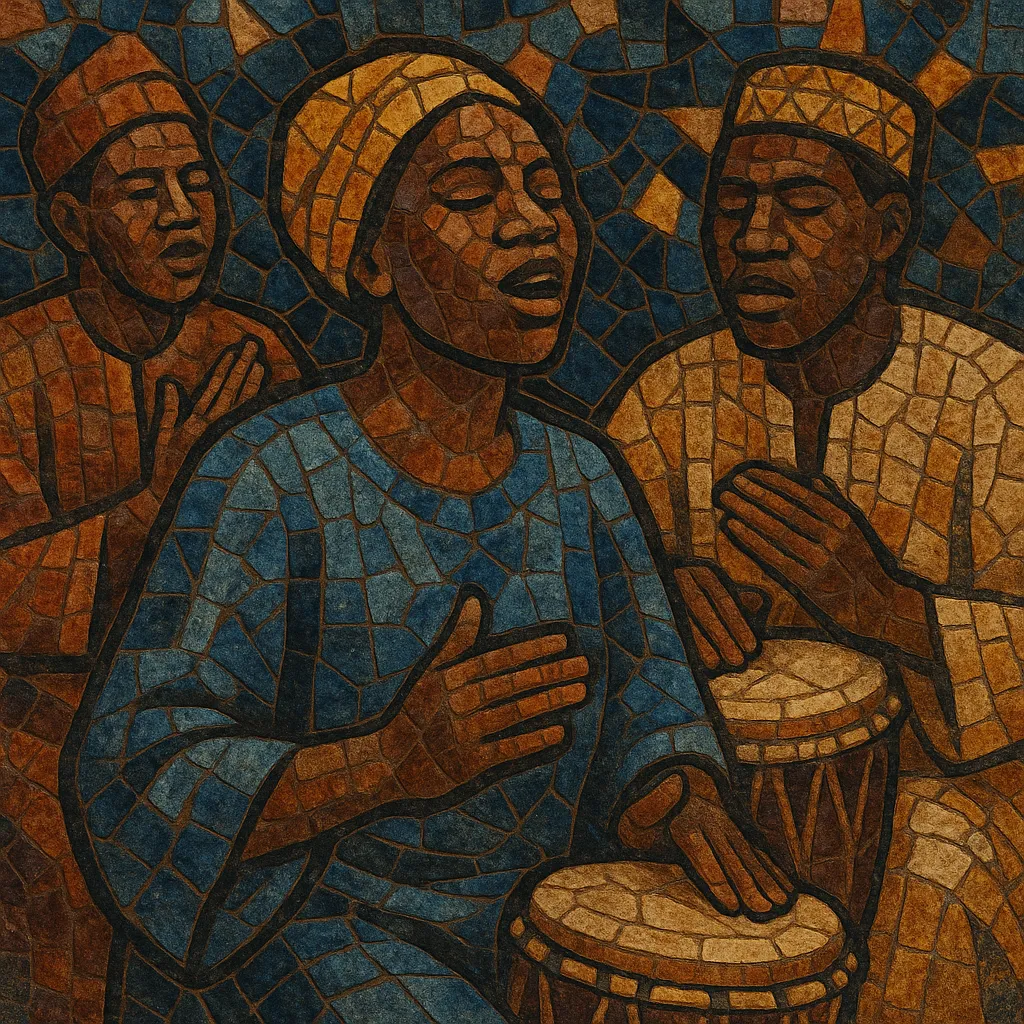Njuup is a traditional Serer vocal-and-percussion music associated with the Ndut initiation rite in Senegal. It is characterized by responsorial (call-and-response) singing, driving handclaps, and cyclical percussion patterns that create a trance-like, communal feel.
The style is devotional and didactic, with lyrics that transmit Serer cosmology, ethics, and communal memory. While largely a community practice led by praise-singers and initiation choirs, its melodic phrasing, vocal ornamentation, and rhythmic drive have seeped into popular Senegalese styles, most notably mbalax.
Njuup emerged among the Serer people of the Sine-Saloum region as part of the Ndut initiation cycle. Its performances served a pedagogical role, encoding moral instruction and Serer spiritual concepts in refrains that were easy to remember and transmit. The music’s responsorial structure and emphasis on group participation reflect its communal purpose and sacred context.
Historically, njuup has been performed a cappella or with sparse percussion—handclaps, calabash, and later sabar- and tama-led accompaniments. Melodies are narrow-ranged and iterative, allowing voices to interlock above polyrhythmic timelines. The tradition was transmitted orally by praise-singers and initiation choirs, with women’s choruses playing a prominent role.
In the late 20th century, select performers brought njuup repertoire and vocal techniques to the stage and studio. The celebrated Serer griotte Yandé Codou Sène recorded njuup chants and collaborated with popular artists, preserving the tradition on record while maintaining its ritual dignity.
Njuup’s phrasing, rhythmic cycles, and declamatory chant style fed directly into Senegal’s mbalax in the 1970s–80s, and its spoken-sung delivery informed Wolof tassu (praise-chant), which later shaped Senegalese rap flows. Thus, despite its sacred roots, njuup became a foundational strand in modern Senegalese popular music.


